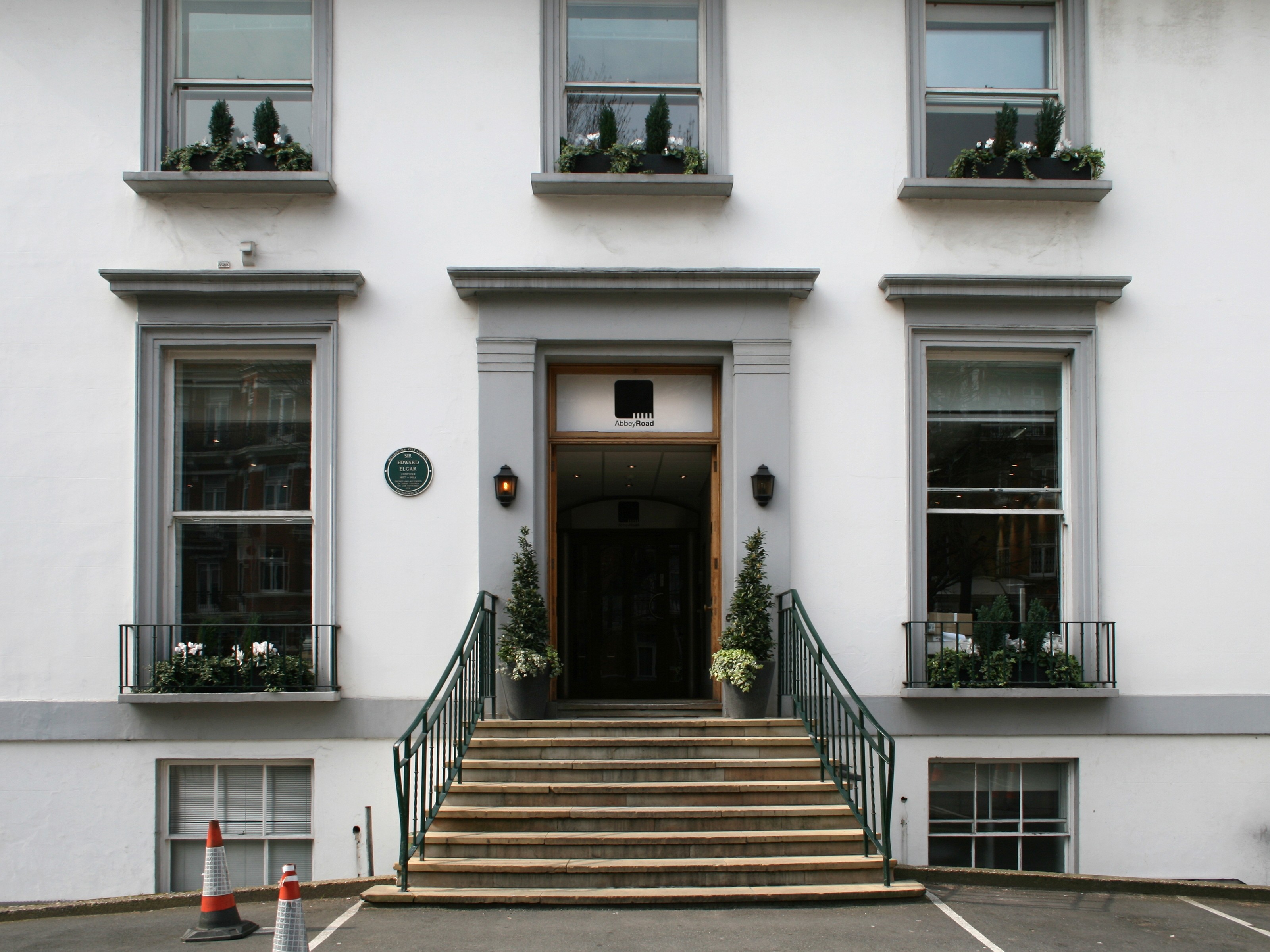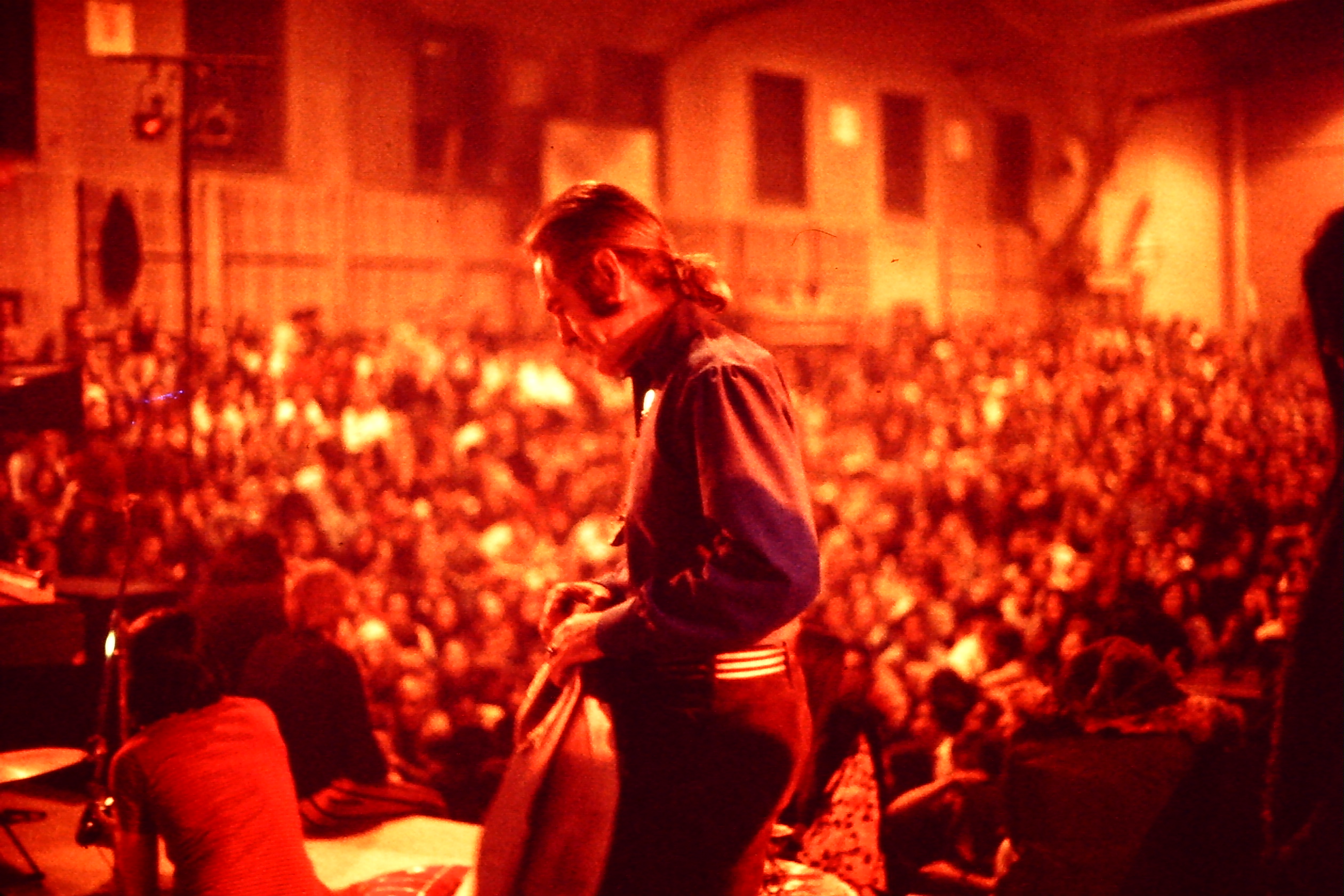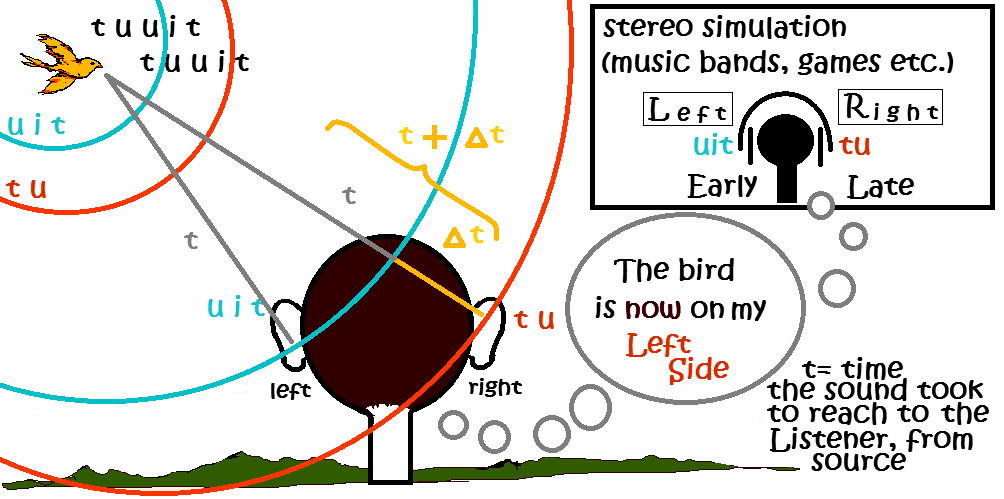|
Revolution 9
"Revolution 9" is a sound collage from the Beatles' 1968 self-titled double album (also known as the "White Album"). The composition, credited to Lennon–McCartney, was created primarily by John Lennon with assistance from Yoko Ono and George Harrison. Lennon said he was trying to paint a picture of a revolution using sound. The composition was influenced by the avant-garde style of Ono as well as the musique concrète works of composers such as Edgard Varèse and Karlheinz Stockhausen. The recording began as an extended ending to the album version of Lennon's song "Revolution". Lennon, Harrison and Ono then combined the unused coda with numerous overdubbed vocals, speech, sound effects, and short tape loops of speech and musical performances, some of which were reversed. These were further manipulated with echo, distortion, stereo panning, and fading. At eight minutes and twenty-two seconds, it is the longest track that the Beatles officially released while together as a ban ... [...More Info...] [...Related Items...] OR: [Wikipedia] [Google] [Baidu] |
The Beatles
The Beatles were an English Rock music, rock band formed in Liverpool in 1960. The core lineup of the band comprised John Lennon, Paul McCartney, George Harrison and Ringo Starr. They are widely regarded as the Cultural impact of the Beatles, most influential band in Western popular music and were integral to the development of Counterculture of the 1960s, 1960s counterculture and the recognition of popular music as an art form. Rooted in skiffle, beat music, beat and 1950s rock and roll, rock 'n' roll, their sound incorporated elements of classical music and traditional pop in innovative ways. The band also explored music styles ranging from Folk music, folk and Music of India, Indian music to Psychedelic music, psychedelia and hard rock. As Recording practices of the Beatles, pioneers in recording, songwriting and artistic presentation, the Beatles revolutionised many aspects of the music industry and were often publicised as leaders of the Baby boomers, era's youth and soc ... [...More Info...] [...Related Items...] OR: [Wikipedia] [Google] [Baidu] |
Revolution (Beatles Song)
"Revolution" is a song by the English Rock music, rock band the Beatles, written by John Lennon and credited to the Lennon–McCartney partnership. Three versions of the song were recorded and released in 1968, all during sessions for the Beatles' The Beatles (album), self-titled double album, also known as the "White Album": a slow, bluesy arrangement ("Revolution 1") included on the album; an abstract sound collage (titled "Revolution 9") that originated as the latter part of "Revolution 1" and appears on the same album; and the faster, hard rock version similar to "Revolution 1", released as the A-side and B-side, B-side of "Hey Jude". Although the single version was issued first, it was recorded several weeks after "Revolution 1", intended for release as a single. A music video for the song was shot using the backing track from the single version, their appearances reflecting the song's atmosphere, along with live-sung lyrics that more closely resemble the album version. I ... [...More Info...] [...Related Items...] OR: [Wikipedia] [Google] [Baidu] |
Ian MacDonald
Ian MacCormick (known by the pseudonym Ian MacDonald; 3 October 1948 – 20 August 2003) was an English music critic, journalist and author, best known for both '' Revolution in the Head'', his critical history of the Beatles which borrowed techniques from art historians, and ''The New Shostakovich'', a study of Russian composer Dmitri Shostakovich. Education and career Ian MacDonald was born in London on 3 October 1948. He studied at Dulwich College before briefly attending King's College, Cambridge, at first to study English, then archaeology and anthropology. He dropped out after a year; while at Cambridge, he was distantly acquainted with the singer-songwriter Nick Drake. From 1972 to 1975 he served as assistant editor at ''NME''. MacDonald began a songwriting collaboration as a lyricist with the band Quiet Sun, which included his brother Bill MacCormick and future Roxy Music guitarist Phil Manzanera. The collaboration resumed in the late 1970s, with MacDonald providing ... [...More Info...] [...Related Items...] OR: [Wikipedia] [Google] [Baidu] |
List Of Images On The Cover Of Sgt
A list is a set of discrete items of information collected and set forth in some format for utility, entertainment, or other purposes. A list may be memorialized in any number of ways, including existing only in the mind of the list-maker, but lists are frequently written down on paper, or maintained electronically. Lists are "most frequently a tool", and "one does not ''read'' but only ''uses'' a list: one looks up the relevant information in it, but usually does not need to deal with it as a whole".Lucie Doležalová,The Potential and Limitations of Studying Lists, in Lucie Doležalová, ed., ''The Charm of a List: From the Sumerians to Computerised Data Processing'' (2009). Purpose It has been observed that, with a few exceptions, "the scholarship on lists remains fragmented". David Wallechinsky, a co-author of ''The Book of Lists'', described the attraction of lists as being "because we live in an era of overstimulation, especially in terms of information, and lists help us ... [...More Info...] [...Related Items...] OR: [Wikipedia] [Google] [Baidu] |
The Observer
''The Observer'' is a British newspaper published on Sundays. First published in 1791, it is the world's oldest Sunday newspaper. In 1993 it was acquired by Guardian Media Group Limited, and operated as a sister paper to ''The Guardian'' and '' The Guardian Weekly''. In December 2024, Tortoise Media acquired the paper from the Scott Trust Limited, with the transition taking place on 22 April 2025. History Origins The first issue was published on 4 December 1791 by W.S. Bourne, making ''The Observer'' the world's oldest Sunday newspaper. Believing that the paper would be a means of wealth, Bourne instead soon found himself facing debts of nearly £1,600. Though early editions purported editorial independence, Bourne attempted to cut his losses and sell the title to the government. When this failed, Bourne's brother (a wealthy businessman) made an offer to the government, which also refused to buy the paper but agreed to subsidise it in return for influence over its editori ... [...More Info...] [...Related Items...] OR: [Wikipedia] [Google] [Baidu] |
John Cage
John Milton Cage Jr. (September 5, 1912 – August 12, 1992) was an American composer and music theorist. A pioneer of indeterminacy in music, electroacoustic music, and Extended technique, non-standard use of musical instruments, Cage was one of the leading figures of the post-war avant-garde. Critics have lauded him as one of the most influential composers of the 20th century. He was also instrumental in the development of modern dance, mostly through his association with choreographer Merce Cunningham, who was also Cage's romantic partner for most of their lives. Cage's teachers included Henry Cowell (1933) and Arnold Schoenberg (1933–35), both known for their radical innovations in music, but Cage's major influences lay in various Eastern world, East and South Asia, South Asian cultures. Through his studies of Indian philosophy and Zen Buddhism in the late 1940s, Cage came to the idea of Aleatoric music, aleatoric or Indeterminism#Philosophy, chance-controlled music, which ... [...More Info...] [...Related Items...] OR: [Wikipedia] [Google] [Baidu] |
Carnival Of Light
"Carnival of Light", originally known as "Untitled", is an unreleased avant-garde recording by the English rock band the Beatles. It was commissioned for the Million Volt Light and Sound Rave, an event held at the Roundhouse in London on 28 January and 4 February 1967. Recorded during a session for the song " Penny Lane", "Carnival of Light" is nearly 14 minutes long and contains distorted, echo-laden sounds of percussion, keyboards, guitar and vocals. Its creation was initiated by Paul McCartney's interest in the London avant-garde scene and through his connection with the design firm Binder, Edwards & Vaughan (often called BEV, and headed by the partners Doug Binder, Dudley Edwards and David Vaughan). Since the event, "Carnival of Light" has rarely been heard, and does not circulate on bootlegs. For McCartney, the piece came to hold significance in his efforts to be recognised as the first Beatle to fully engage with the avant-garde, over a year before John Lennon recorde ... [...More Info...] [...Related Items...] OR: [Wikipedia] [Google] [Baidu] |
Tomorrow Never Knows
"Tomorrow Never Knows" is a song by the English rock band the Beatles, written primarily by John Lennon and credited to Lennon–McCartney. It was released in August 1966 as the final track on their album ''Revolver'', although it was the first song recorded for the LP. The song marked a radical departure for the Beatles, as the band fully embraced the potential of the recording studio without consideration for reproducing the results in concert. When writing the song, Lennon drew inspiration from his experiences with the hallucinogenic drug LSD and from the 1964 book '' The Psychedelic Experience: A Manual Based on the Tibetan Book of the Dead'' by Timothy Leary, Richard Alpert and Ralph Metzner. The Beatles' recording employed musical elements foreign to pop music, including musique concrète, avant-garde composition and electro-acoustic sound manipulation. It features an Indian-inspired modal backing of tambura and sitar drone and bass guitar, with minimal harmonic ... [...More Info...] [...Related Items...] OR: [Wikipedia] [Google] [Baidu] |
Fading
In wireless communications, fading is the variation of signal attenuation over variables like time, geographical position, and radio frequency. Fading is often modeled as a random process. In wireless systems, fading may either be due to multipath propagation, referred to as multipath-induced fading, weather (particularly rain), or shadowing from obstacles affecting the wave propagation, sometimes referred to as shadow fading. A fading channel is a communication channel that experiences fading. Key concepts The presence of reflectors in the environment surrounding a transmitter and receiver create multiple paths that a transmitted signal can traverse. As a result, the receiver sees the superposition of multiple copies of the transmitted signal, each traversing a different path. Each signal copy will experience differences in attenuation, delay and phase shift while traveling from the source to the receiver. This can result in either constructive or destructive inter ... [...More Info...] [...Related Items...] OR: [Wikipedia] [Google] [Baidu] |
Panning (audio)
Panning is the distribution of an audio signal (either monaural or stereophonic pairs) into a new stereo or multi-channel sound field determined by a pan control setting. A typical recording console has a pan control for each incoming source channel. A pan control or pan pot (shorthand for ''panoramic potentiometer'')https://www.nfi.edu/what-is-panning/, is a control with a position indicator that can range continuously from the clock position, 7 o'clock when fully left to the clock position, 5 o'clock position fully right. Audio mixing (recorded music), Audio mixing software replaces pan pots with on-screen virtual knobs or sliders which function like their physical counterparts. Overview Pan pots split audio signals into left and right channels via an internal architecture that determines how much of the source signal is sent to the left and right buses.Hodgson, Jay (2010)''Understanding Records'' p.162. . "Pan pots split audio signals into left and right channels, each equipped ... [...More Info...] [...Related Items...] OR: [Wikipedia] [Google] [Baidu] |
Stereophonic Sound
Stereophonic sound, commonly shortened to stereo, is a method of sound reproduction that recreates a multi-directional, 3-dimensional audible perspective. This is usually achieved by using two independent audio channels through a configuration of two loudspeakers (or stereo headphones) in such a way as to create the impression of sound heard from various directions, as in natural hearing. Because the multi-dimensional perspective is the crucial aspect, the term ''stereophonic'' also applies to systems with more than two channels or speakers such as quadraphonic and surround sound. Binaural recording, Binaural sound systems are also ''stereophonic''. Stereo sound has been in common use since the 1970s in entertainment media such as broadcast radio, recorded music, television, video cameras, cinema, computer audio, and the Internet. Etymology The word ''stereophonic'' derives from the Greek language, Greek (''stereós'', "firm, solid") + (''phōnḗ'', "sound, tone, voice" ... [...More Info...] [...Related Items...] OR: [Wikipedia] [Google] [Baidu] |
Tape Loop
In music, tape loops are loops of magnetic tape used to create repetitive, rhythmic musical patterns or dense layers of sound when played on a tape recorder. Originating in the 1940s with the work of Pierre Schaeffer, they were used among contemporary composers of 1950s and 1960s, such as Éliane Radigue, Steve Reich, Terry Riley, and Karlheinz Stockhausen, who used them to create phase patterns, rhythms, textures, and timbres. Popular music authors of 1960s and 1970s, particularly in psychedelic, progressive and ambient genres, used tape loops to accompany their music with innovative sound effects. In the 1980s, analog audio and tape loops with it gave way to digital audio and application of computers to generate and process sound. Description In a tape loop, a section of magnetic tape is cut and spliced end-to-end, creating a circle or loop which can be played continuously, usually on a reel-to-reel tape recorder, making the sound repeat endlessly. Simultaneous ... [...More Info...] [...Related Items...] OR: [Wikipedia] [Google] [Baidu] |







